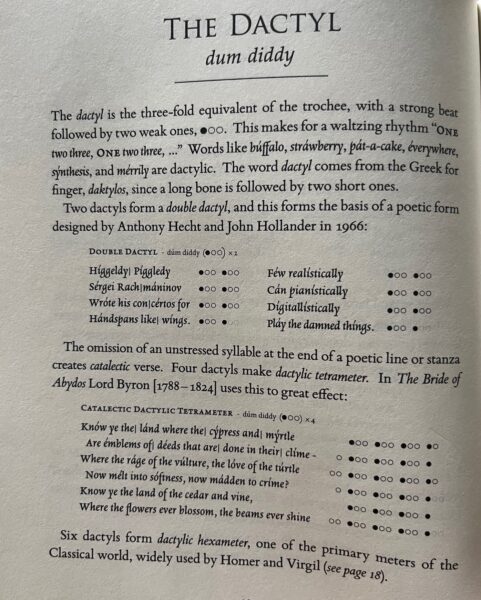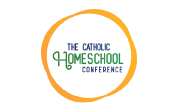Learning About Poetic Meter and Form
The discipline of poetry has suffered a catastrophic disintegration in modern times. A quick perusal of what passes for poetry today reveals that the art is in a state of chaos. Most contemporary poetry consists almost entirely of free verse, untethered by any constraints of meter or form. This is a far cry from the historic roots of poetry, the form of which was traditionally structured around components such as rhythm, feet, meter, rhyme, punctuation, line variation, substitution, stanzas, and much more. While traditional poetry was technical and ordered, modern poetry is loose and disheveled, the written equivalent of a Jackson Pollock painting. Traditional poetic form can thus be seen as another casualty of the modern war against beauty.
A while back, I picked up a copy of a little book called Poetic Meter and Form by Octavia Wynne (Wooden Books, 2015). As poetry isn’t at the top of my list of priorities, Wynne’s book sat on my shelf for a good while before I picked it up. Reading it made me wish I’d placed poetry higher up on that list! Wynne is a Scottish poet and composer whose book is meant to reintroduce today’s student of poetry to the fundamental structural components that make a poem a poem. Digging through this book was a breath of fresh air. Wynne’s Poetic Meter and Form reestablishes rhythm as the central component of poetry and introduces readers to the traditional rhythmic forms.
What is Poetry?
The question “What is poetry?” is really at the heart of the modern trouble. For modernity, the answer is frustratingly subjective. Poetry today seems to have no independent existence outside the will of the poet; a poem is a poem if the writer intends what he writes to be taken as poetry—regardless of whether it possesses any inherent metrical structure. Literally anything can (and is) put forward as poetry. This is analogous to contemporary trends in modern art, where traditional technique has been largely abandoned in favor of an unstructured approach that is responsible for the nonsense that fills many museum galleries today.
By contrast, Octavia Wynne’s book reminds us that poetry was once a harmonious and highly ordered discipline. Wynne begins her book by reminding us that the structure of poetry is born from the inherent rhythmic structures already present in all human language. She says:
“Listen to people speaking any language and one can immediately detect patterns of various kinds. Though mostly spoken, language is innately suited for song or chant and its ancient shapes echo in music and poetry…the building blocks and tools of poetry are thus reflections and refinements of natural patterns already present in language.” (1)
This is the answer to the question, “What is poetry?” Poetry takes the patterns inherent in any language and orders them according to a definitive form. The pleasure in listening to poetry arises from the brain’s recognition of these patterns structured within the poetic verse.
Types of Poetic Meter
After introducing us to the fundamental idea of poetry, Wynne spends the rest of the book explaining the different types of meter, which are also composed of patterns known as metrical “feet.” A metrical foot is the basic rhythmic unit in poetry, a combination of stressed and unstressed syllables that repeats throughout a line or verse. It’s the “beat” or “pulse” of the poem’s rhythm. Meter is the overall rhythmic pattern of a line of poetry, formed by repeating specific types of feet.
Tradition offers many different types of metrical feet, including dactyls, iambs, amphibrach, spondee, and more. Wynne introduces these metrical feet with extreme efficiency, dedicating a single page to each. She utilizes a simple method of explaining the rhythm with colored dots to demonstrate where the accents fall in a given line. She offers examples from famous poems to illustrate. Here are samples from the pages of dactyls and iambs:


After discussing metrical feet, Wynne goes into other poetic components such as meter, substitution, rhyme, and stanza. She then explores various styles of poetry from the West and East, including Celtic and Anglo-Saxon verse, Greek odes and elegies, the Arabi ghazal, and Japan’s famed tankas and haikus.
Another aspect of this book I sincerely appreciate is Wynne’s ample citations of the world’s great poets. Poets as diverse as Shakespeare, Frost, Donne, Spenser, and Dr. Seuss all appear as examples in the book. The book is biased towards English poets, but the Greeks, Norse, Celts, and Japanese also make an appearance.
Learning the Art of Poetry
At 58 pages, Octavia Wynne’s book is short enough to serve as a handy, usable reference guide for students wanting to learn more about the basic structure of poetry. I have been using it myself to help me practice working with different forms. It would be a great resource for a literary-minded youngster eager to delve into the mechanics of traditional poetic forms.
If your child is interested in learning more about poetry, Homeschool Connections offers a wide variety of courses on the art of poetry in general and specific poets in particular.
- Grow Your Imagination Through Poetry taught by Cate Godlewsky (grade school)
- Coming Soon: The Power of Poetry taught by Marjule Hartmann (middle school)
- Introduction to Stanza Forms: Poetry taught by Sally Thomas (high school)
- Introduction to Metrical Forms: Poetry with Sally Thomas (high school)
- How to Read a Poem taught by Sally Thomas (high school)
- Edgar Allen Poe’s Tales and Poems taught by Henry Russell (high school)
- Poems Every Catholic Should Know taught by Joseph Pearce (high school)
What are your thoughts on this topic? I invite you to join me and other homeschoolers in the Homeschool Connections Facebook Group to continue this discussion. I would love to hear from you!
(1) Octavia Wynne, Poetic Meter and Form (Wooden Books: New York, 2015), 2-3






